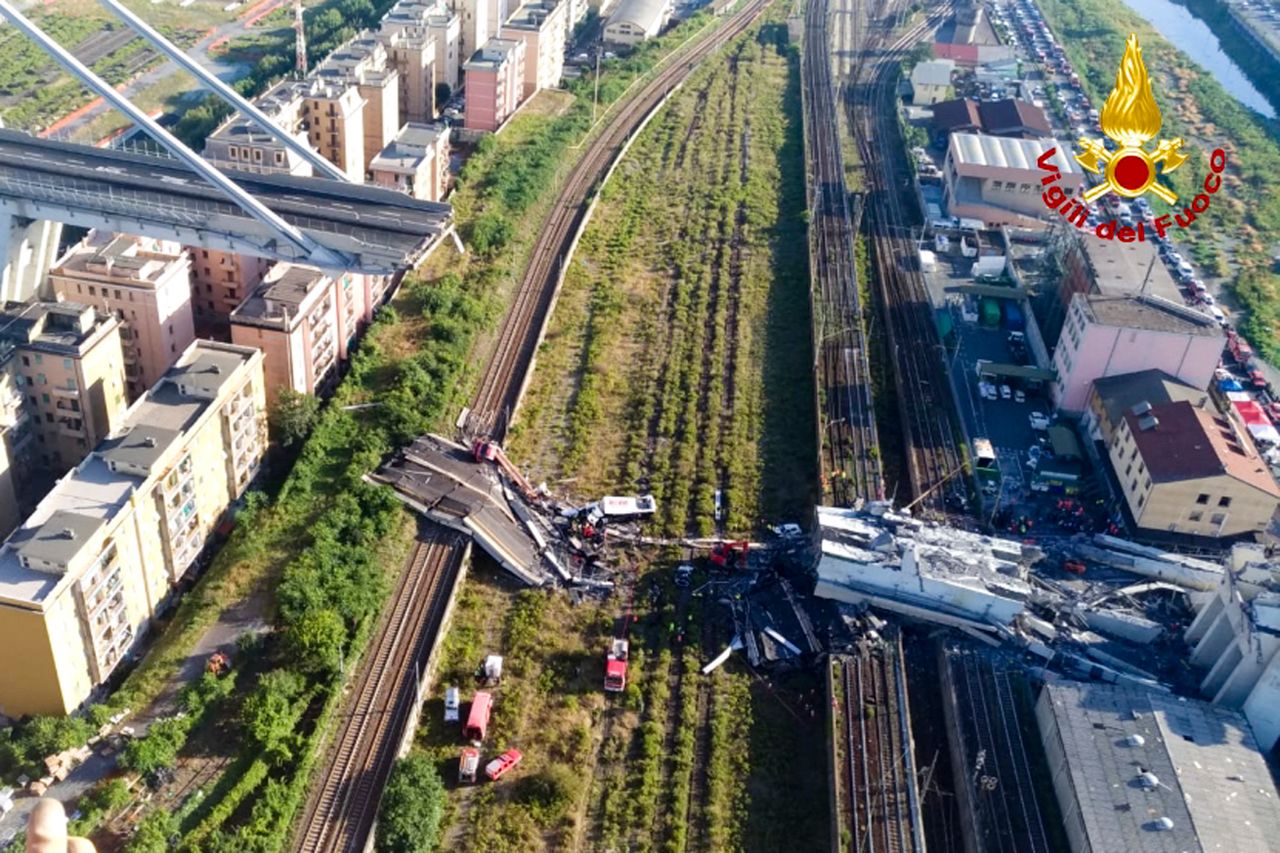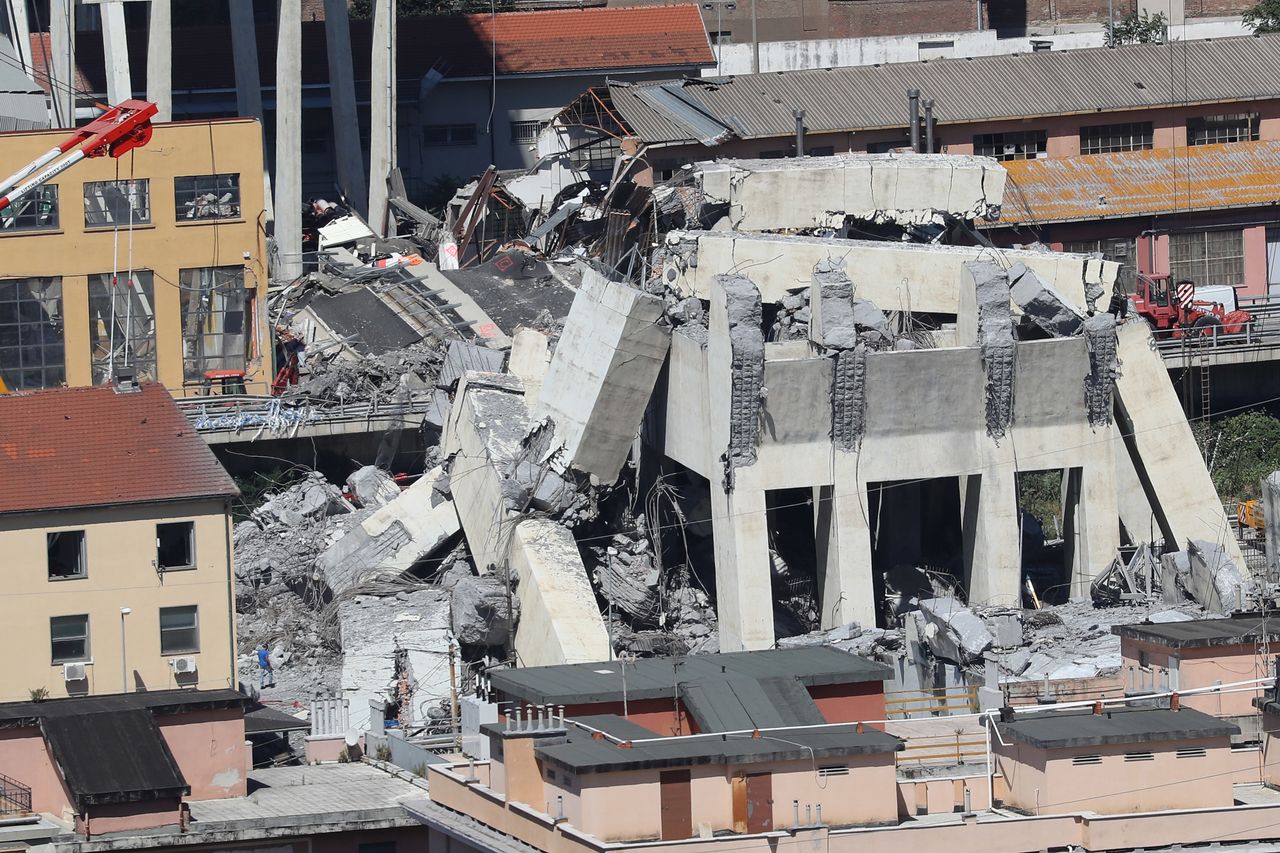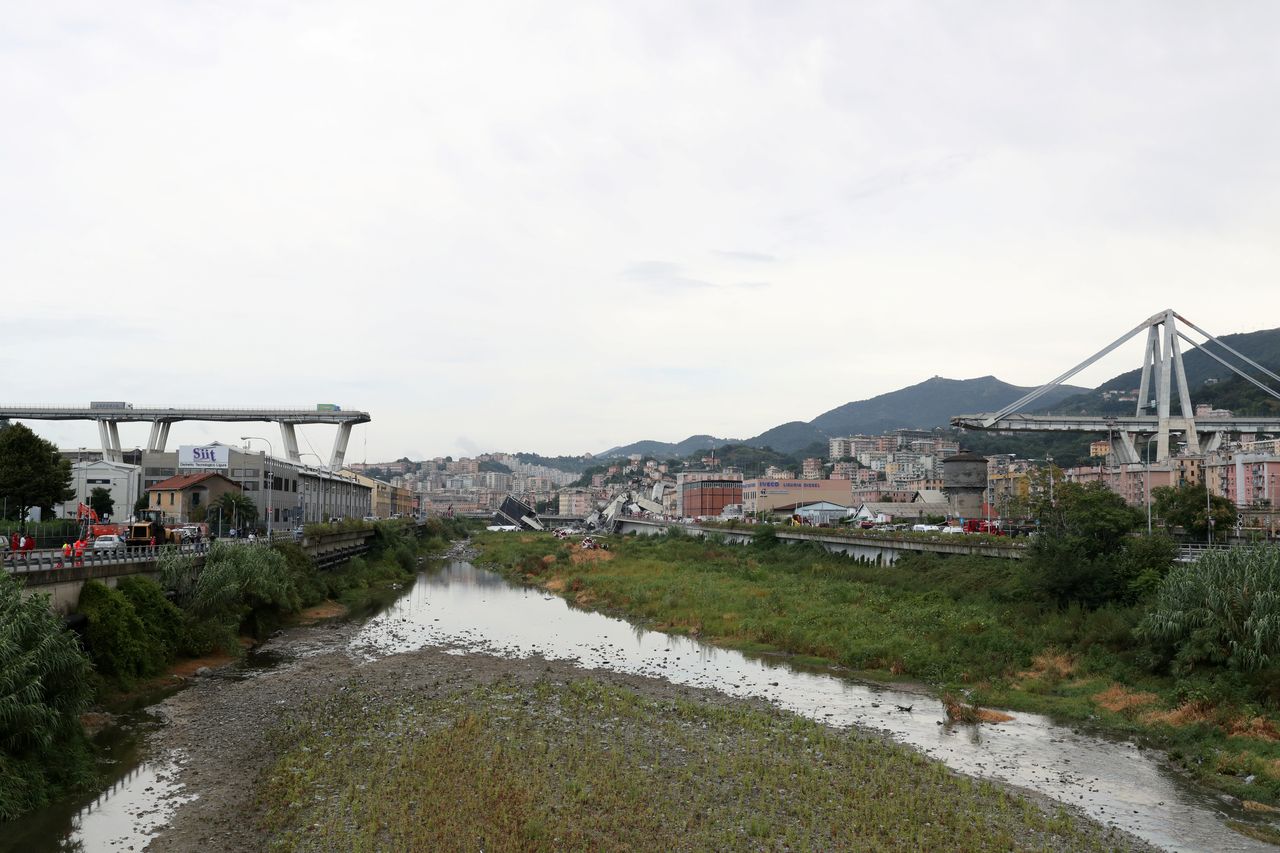Emergency workers in the Italian city of Genoa were still at work on Wednesday, clearing wrecked vehicles and debris following the deadly collapse of a major road bridge.
As cranes moved in to shift truck-sized chunks of broken concrete, hundreds of firefighters searched for survivors, while public shock turned to anger over the state of the 1.2 km-long bridge, completed in 1967 and refurbished two years ago.
The 51-year-old structure collapsed in driving rain on Tuesday, killing at least 39 people and injuring 15 others. Genoa’s police force suggested the number of fatalities could continue to rise.

Italy’s transport minister has now called on senior managers at the company which operated the motorway bridge to resign.
Danilo Toninelli said on Wednesday that the senior management at Autostrade per l’Italia “must step down”. Speaking to RAI television, he said the government intended to cancel its deal with the company, which manages the A10 toll motorway connecting Genoa to the French border.
Matteo Salvini, the interior minister, said that those responsible would “pay, pay everything, and pay dearly”, as a criminal inquiry into the tragedy was announced.
It is not yet clear what caused the bridge to collapse, which came as maintenance work was being done on the bridge and as the Liguria region experienced torrential rainfall.
Apocalyptic images of the scene showed dozens of cars crumpled alongside smashed concrete and asphalt.
Authorities said at least 30 cars and three heavy vehicles were on the 80-metre (260ft) section of the span when it came down in an industrial area filled with warehouses.
Hundreds of rescue workers and canine crews were on the scene, using heavy equipment and dogs to search for possible survivors.

Fire brigade spokesman Luca Cari said 400 firefighters were at the site, lifting big chunks of concrete to create spaces for rescue teams to check for survivors.
In Paris, France’s foreign ministry said three French nationals were among the dead.
Witnesses reported hearing a roar as the bridge collapsed during midday traffic on the eve of a major holiday that sees most Italians leaving cities for beaches and mountains.
The disaster, on a major interchange connecting Genoa and other northern cities with beaches in eastern Liguria into France, has focused attention on Italy’s ageing infrastructure, particularly its concrete bridges and viaducts built in the postwar boom of the 1950s and 1960s.
Prosecutors said they were opening an investigation but had not identified any targets.
Eye-witness Ivan, 37, evacuated on Tuesday from the nearby building where he works, described the collapse as unbelievable.
“To see a pylon come down like papier-mâché is an incredible thing,” he said. “It’s been a lifetime that we’ve known there were problems. It is in continual maintenance,” he told Reuters.
“In the 90s they added some reinforcements on one part, but also underneath you can see rust.”

Bridge operator Autostrade, a unit of Milan-listed Atlantia group, said it had carried out regular, sophisticated checks on the structure before the disaster and that these had provided reassuring results.
“Furthermore, the company’s technicians have relied, in order to assess the state of the viaduct and the efficacy of control systems being adopted, of companies and institutions which are world leaders in testing and inspections based on best international practices,” it said in a statement.
